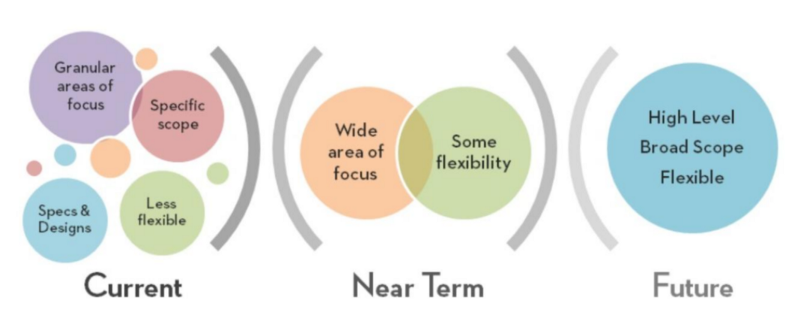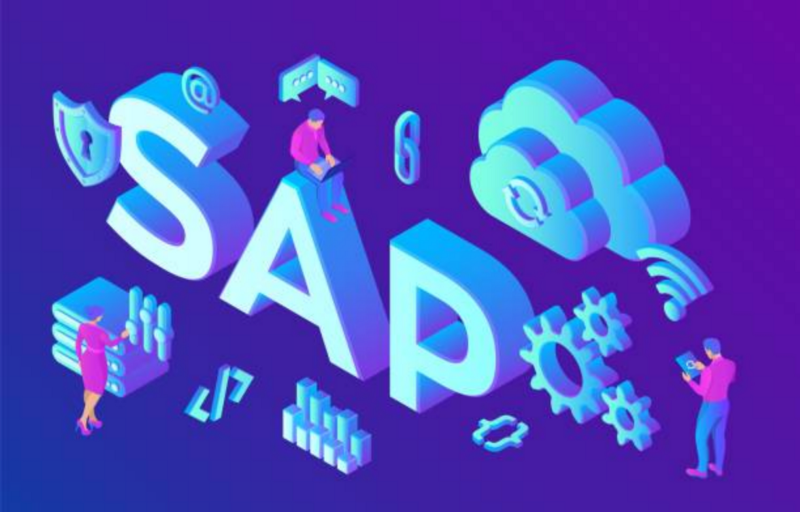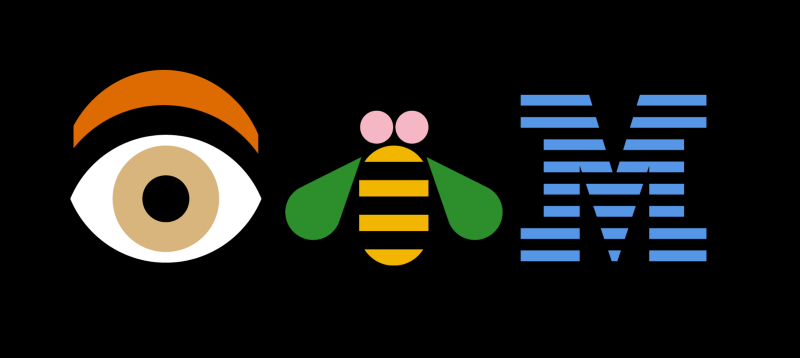
Atlassian’s new enterprise offering illustration by Trace Byrd
In my first story ‘User Experience is …’ I promised that …
"over the course of a few stories, I’ll try and cover a few of the sciences we draw upon in our art as a creative community to create engaging experiences."
Designing for enterprise experiences is big, there’s a lot of people involved, so it’s slower, it’s complex as it involves lots of different groups and departments, it involves old things designed/built before you were born, so it’s messy and not easy. It’s like a ball of twine that you need to unravel and straighten out. But because of all these reasons and more it’s really rewarding and satisfying. Here’s why …

Atlassian’s new enterprise offering illustration by Trace Byrd
So working to design experiences within enterprise and big organisations is like writing a new chapter within an existing book. You have to look at what becomes before and what comes after to be able to dovetail the new chapter in nicely to the existing story. This might mean making some compromises to the story line/experience.
From a startup perspective using the same analogy, it would be like writing the story from a blank page. Which brings its own challenges, uncertainty, understanding the business model and market, stalling and the growth of the business, product and team.
A drastic difference between designing enterprise tools rather than consumer-facing products is that you have direct access to the people who use the tools first-hand, along with the ability to have near-immediate feedback. That’s the pretty special bit right there.
There’s no recruitment cost or time for participants and there’s not the need to fall back to best people available of family and friends and other people in your teams or office. The people who are using the experiences you are designing are fellow employees and colleagues that are at the end of an email, chat message or phone call. Therefore, your colleagues serve as early adopters, and, as designers, we have the ability to apply their experience and direct insight to inform the next steps.
Another difference is the complexity that colleagues have to deal with. Often the service that a colleague gets isn't thought about, they are left to make do and work it out. Neglecting the fact that the organisation is paying directly for that unproductive 'admin time', as they pay someone to sit around and wait, or have to look up how to do something. Neither are the interfaces. Sure complex, intricate interfaces are all around us. But many of these sit in the Enterprise space, with colleagues just being left to figure it out, as getting them right is challenging. But just because somethings complex by its nature, it doesn’t have to appear complicated to the colleague.
The next difference comes with who uses the experiences you’re designing. It’s no longer only people who are interested in your specific market or niche using the experience casually or occasionally, but everyone within either your or other organisations. Enterprise products are used by large populations of users, every single day. And these systems make the world go around from Airports to Local Governments, Hospitals to Banks, Schools to Retailers.
But even given that they are used by most of the population for 8 hours a day, they don’t necessarily get the time, attention or love they need, to make these systems easier to use and make the tasks that colleagues quicker or easier to achieve.
Enterprise products because they are used by the many, every single day have the opportunity of bringing people together. As their user base is so broad they have to be able to be used by everyone everyday, in every way and in any situation. They need to perform in a variety of ways, for a variety of people, whether they are well or are experiencing a temporal disability (a headache, eye strain, Repetitive Strain Injury) or a permanent disability.
Designing for organisations is different from startups focused on customers, as it spans the whole employee lifetime, from hire-to-retire. It's the entire lifetime of a person within the organisation, with all the different lifecycles and life stages. It will covers both the day-to-day, micro-moments of an employee’s daily grind (like getting quick access to payslips) as much as they plan for key macro-moments like pensions and sabbaticals. This often includes looking at the software, interface, human process, as part of the design of the whole service. But it’s even bigger than that, as it will also take into account workplace design and workforce culture. And will be the glue that holds many departments together in that overall experience. Looking at how to incorporate inclusive design across IT, HR, corporate strategy and internal communicaiton teams.
Enterpise UX is the design of a holistic working experience that empowers employees in being successful and developing a genuine sense of belonging towards the organisation they work for.
Smashing Magazine
Designing for enterprise often looks at a human process and how a digital tool can help with task or process. So you’ll need to look at the entire service so you understand how the whole process works, which players are involved and how a certain piece of the puzzle works with the others. Having that view allows you to understand which bits you’re able to change, which bits are working well, which bits can’t be changed and which bits might need to be worked around.
User Experience is … Service Design
Service Design is not just making individual experiences better but whole services easier, quicker & more delightful to engage with.
One of the key things in understanding the complex world of organisations and enterprises is the field of systems theory. System thinking studies systems from the perspective of the whole system, its various subsystems and the recurring patterns in the relationships between the subsystems. Systems theory has greatly influenced how we understand and change organisations and enterprises.
It covers the study of society as a complex arrangement of elements, including individuals and their beliefs, as they relate and adapt to a whole.
You can probably guarantee that in any enterprise there are a number of systems and they’re probably not small ones! So approaching enterprise within a systems thinking way will aid a successful solution to the problem you’re facing. It will also mean that the solution will be scalable across the scale of the organisation and enterprise and also be able to integrate with other products and systems around it.
But working in organisations doesn’t have to be complex, it’s all about changing your field of view. You might want to elevate to high level to understand the landscape the overall service and system that you’re working in, but then you’ll need to move down to a lower view to then start to enact change. This all depends on the story you’re trying to tell, the outcomes you’re trying to achieve and the people who are listening to the story.
Likewise with the design horizon, you’ll need to flex and adjust which horizon you’re designing for, the ‘current’, ‘near term’ or ‘future’.

User Experience is … influencing product strategy and planning
Choosing the right time horizon to plan in and when to share these with groups, teams and stakeholders
Because enterprise design is so hard and complicated, it’s very, very rewarding. The challenge is greater and so is the reward when you start to realise the outcomes. The reward is magnified knowing that the improvements you design actively impact a large populations day and not just once when they choose to use the product, but every day they are at work.
Working within organisations also allows you as a designer and person to grow, you’re able to traverse different business units and industry sectors by working across core functions of the organisation. From Finance to Human Resources, Retail to Legal. You’re able to solve problems from different sectors and understand the different way that industries work.
Not only that but you’re also able to traverse roles within the teams you’re working in, to add more support and value. Meaning that you’re able to grow as a person by being able to get some experience with business analysis, product management and scum mastery.
I wanted to end with looking at understanding why experience design now plays a key role within enterprises and organisations by looking at a couple of case studies, first up is SAP.

Some of the key catalysts for being able to design enterprise level experiences is the rise of organisations from being less tactical to being more strategic and the key role that design and experiences plays today at large organisations and enterprises across the globe. With founders and also board level executives with either design in their title or user experience as an active interest and adopter or supporter of Design Thinking.
The Design Thinking journey started in 2004. Hasso Plattner (founder at SAP), now Chairman of the Supervisory Board, delivered a keynote in front of 20,000 customers in which he talked about Design Thinking at SAP. He was inspired by an article about IDEO and Design Thinking that he read right before he went on stage. The response from the audience was overwhelmingly positive and it made it clear that Plattner was into something big.
In an effort to expand his vision, Plattner’s went beyond SAP to incentivise innovation and creativity in the new generation of students. He donated over $35M of his own money for the creation of the Hasso Plattner Institute of Design at Stamford, now known as the D-School.
He also funded the HPI of Design Thinking in Potsdam, Germany. Both institutions, have taken a pioneering role in the development and dissemination of Design Thinking. For Plattner, it is not about a single dimension of design impact within an organisation. It is about something larger, something greater, the formation of design leaders for the future.
The big culture transformation towards a user-centered perspective was sparked with the creation of the AppHaus. Started in Palo Alto as a creative space where people from design, technology, and business work together with clients and end users in a very iterative way developing consumer applications. The AppHaus was created because SAP needed to stay innovative and to respond to the needs of future users. Sam Yen, the current Chief Design Officer of SAP was leading this team at that time.
Design Thinking contributed to change the mindset of how people work, but SAP needed to go a step further. To deliver innovative and easy-to-use solutions to the market, SAP concentrated its efforts in User Experience and, in a revolutionary move, about 4 years ago the company decided to apply a modern User Experience to SAP solutions. They needed to deliver a consistent User Experience across their solutions.
And just to finish I wanted to look at one last case study on IBM and how they maintain momentum through large groups and teams.

IBM Rebus illustrated logo
It’s worth saying that designing at enterprise is probably more about a marathon than a sprint. However we still achieve changes in sprints.
Design sprints are for small, nimble teams, not large enterprises. This is both fact and myth.
It’s true you cannot run a design sprint with 3,000 participants. Or 100. Or even 50. However, if you conduct it with the right dozen participants, you can bring rapid strategic results to an organisation with thousands of employees.
Greg Storey, executive director of design at USAA and previously incubator program lead at IBM, says momentum is perhaps the biggest value that design sprints bring to a large enterprise. Storey emphasised the value of speed
“I think what makes them unique, and why we’re still using them, is we would hear [from senior leadership]. I can’t believe you got this much work done in this short amount of time.”
Greg Storey, Incubator Program Lead at IBM
For many large companies, momentum is difficult to build, making design sprints an attractive approach for high priority projects. Product managers find sprints especially useful in meeting their responsibilities to increase the speed of discovery and delivery.
Even when sprints take longer than average to execute, they get the attention of decision makers, because they produce actionable results and provide answers to momentum-scrubbing problems. Design sprints are an excellent way for groups to get unstuck and find a path of tangible progress for their companies.
We need to find a way to hide complexity of all kinds, interface, software, organisational, departmental and process, behind sensible options that help colleagues navigate the space in a more predictable way. That’s the task of Enterprise UX.
Next up I’m going to shared some of the insights from when I joined the UK’s top Experience Design Leaders in an exclusive intensive program for design thought leaders, in the things we learned the hard way about design leadership.
Originally written as part of the ‘User Experience is …’ series for UX Collective.